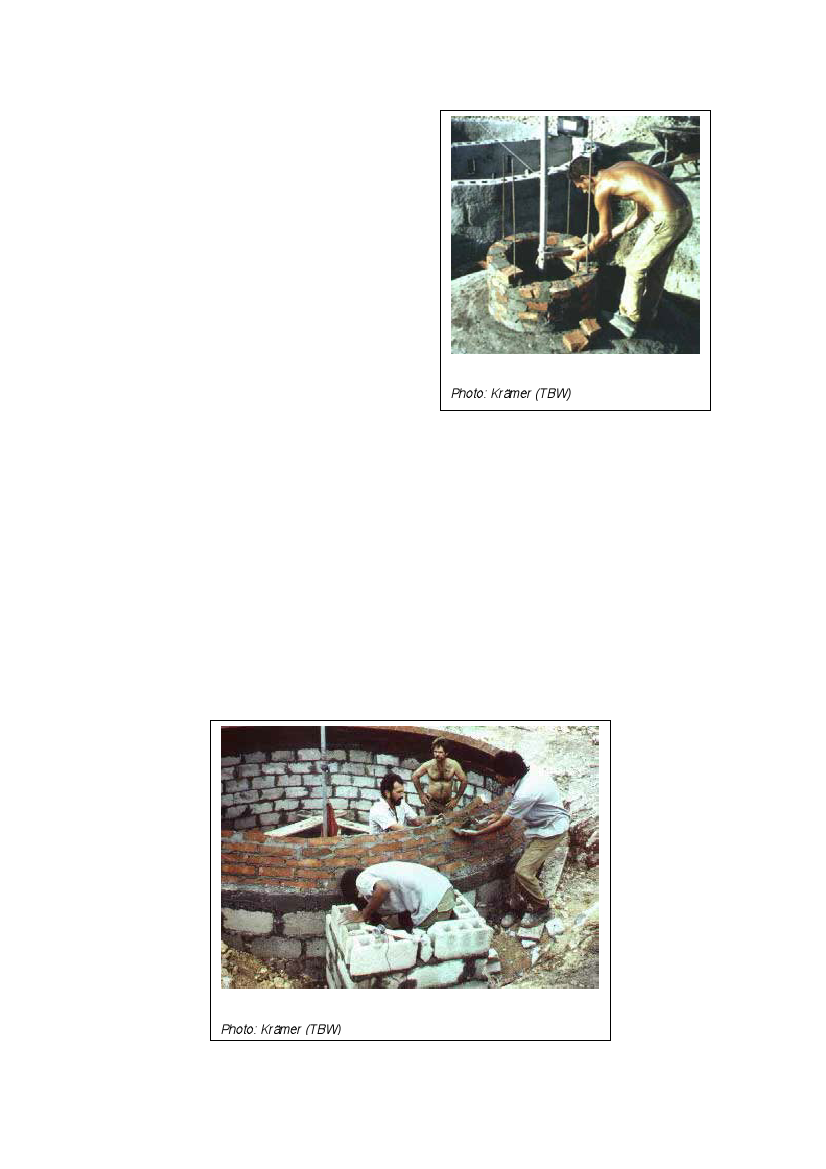
Building material of digester
Digesters can be made from any of the
following materials:
Steel vessels
Steel vessels are inherently gas-tight, have
good tensile strength, and are relatively easy
to construct (by welding). In many cases, a
discarded steel vessel of appropriate shape
and size can be salvaged for use as a biogas
digester. Susceptibility to corrosion both
outside (atmospheric humidity) and inside
(aggressive media) can be a severe problem.
As a rule, some type of anticorrosive coating
must be applied and checked at regular
intervals. Steel vessels are only cost-effective,
if second-hand vessels (e.g. train or truck
tankers) can be used.
Figure 16: Construction of the digester
neck with steel reinforcement
Photo: Krämer (TBW)
Concrete vessels
Concrete vessels have gained widespread acceptance in recent years. The requisite gas-
tightness necessitates careful construction and the use of gas-tight coatings, linings and/or
seal strips in order to prevent gas leakage. Most common are stress cracks at the joints of
the top and the sides. The prime advantage of concrete vessels are their practically unlimited
useful life and their relatively inexpensive construction. This is especially true for large
digesters in industrialized countries.
Masonry
Masonry is the most frequent construction method for small scale digesters. Only well-burnt
clay bricks, high quality, pre-cast concrete blocks or stone blocks should be used in the
construction of digesters. Cement-plastered/rendered masonry is a suitable - and
inexpensive - approach for building an underground biogas digester, whereby a dome-like
shape is recommended. For domes larger than 20 m3 digester volume, steel reinforcement is
advisable. Masons who are to build masonry digesters have to undergo specific training and,
initially, require close supervision.
Figure 17: Construction of the dome for a 30 m3 digester in
Cuba
Photo: Krämer (TBW)
21